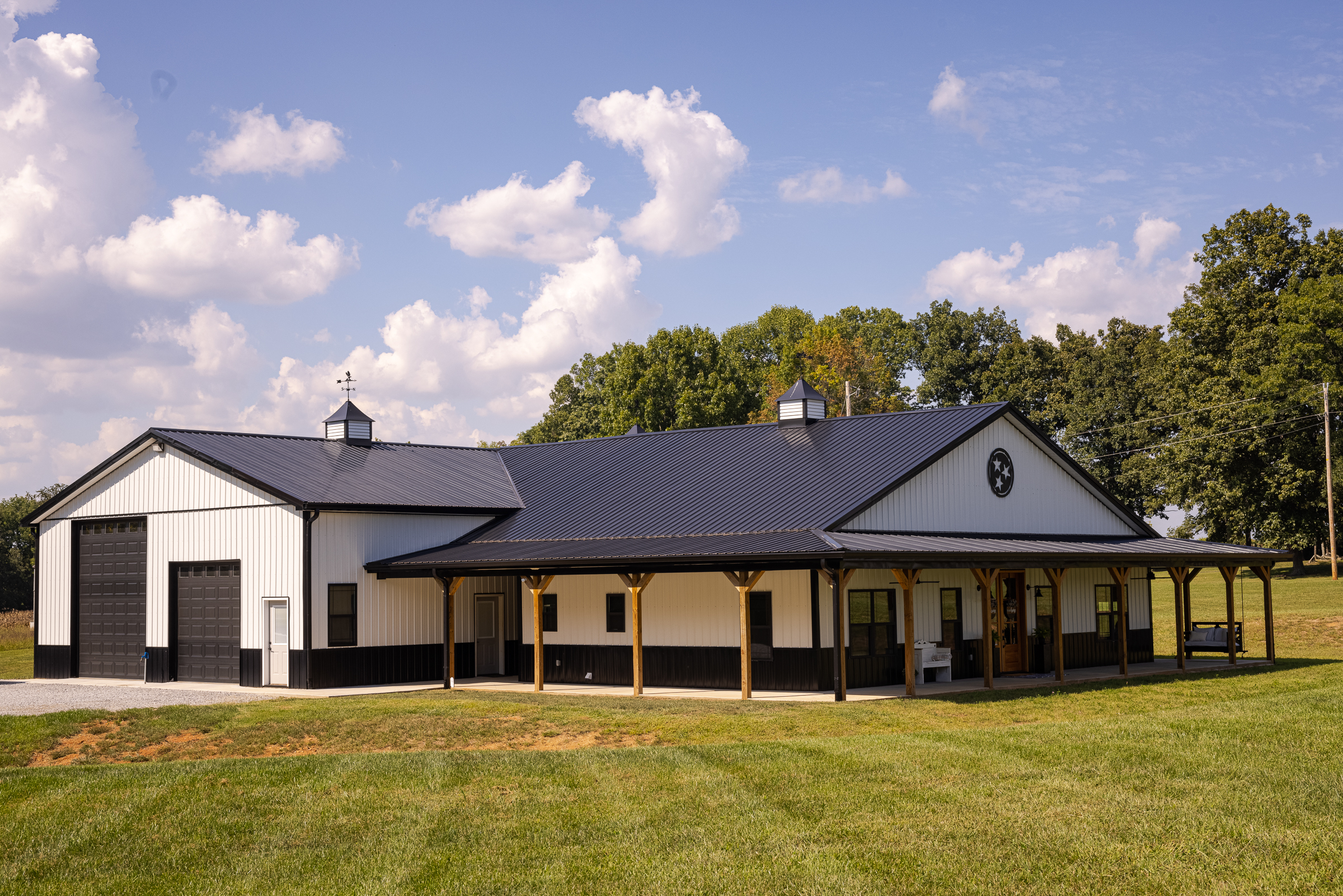Comprehensive Barndominium Repair: Taking Care Of Architectural and Visual Problems
Comprehensive Barndominium Repair: Taking Care Of Architectural and Visual Problems
Blog Article
Barndominiums Vs. Conventional Homes: a Detailed Comparison of Way Of Living and Capability
The decision between barndominiums and traditional homes encompasses different elements, consisting of way of living preferences and useful needs. Barndominiums are characterized by their open layouts and adaptability, often appealing to those that prioritize common living and versatility.
Introduction of Barndominiums
Barndominiums, an unique real estate fad acquiring popularity throughout different regions, blend the rustic beauty of barn-style architecture with the performance of contemporary space. These unique structures typically contain a steel or timber structure, incorporating open layout and high ceilings with energy-efficient features. Typically positioned on expansive country residential or commercial properties, barndominiums offer property owners the opportunity to delight in a calm way of life while supplying sufficient space for different tasks.
The versatility of barndominiums extends past their visual allure; they can serve as both living quarters and practical rooms for leisure activities, workshops, or perhaps small companies. Their adaptive style enables for very easy modification, accommodating diverse family members demands and preferences. Many proprietors value the reduced maintenance needs connected with metal siding and roof, contributing to lasting longevity.

Qualities of Typical Homes
Emphasizing ageless layout and convenience, conventional homes are defined by their distinctive building designs, which frequently reflect historical influences and regional aesthetics. Common functions include in proportion exteriors, gabled roof coverings, and a focus on craftsmanship, leading to a cozy and inviting atmosphere.
Conventional homes commonly include components such as crown molding, wainscoting, and wood floor covering, boosting their timeless allure. They normally include numerous areas with specified objectives, promoting household communication while enabling privacy. learn more. The design usually consists of official living and eating locations, which are helpful to entertaining guests and hosting family events
Exterior materials such as brick, wood, or stone are frequently used, adding to resilience and a sense of permanence. Barndominium builder. Furthermore, lots of standard homes are created with front decks or stoops, promoting a sense of community and connection with the neighborhood
Landscape design plays a substantial duty in standard home style, with well-kept gardens and pathways that enhance curb allure - view now. On the whole, typical homes personify a feeling of fond memories and security, attracting those who value heritage and a more structured living environment
Price Comparison
Typically, a cost comparison between this barndominiums and traditional homes reveals substantial distinctions in building costs and overall investment. Barndominiums, often created from steel or steel frameworks, normally sustain lower material and labor prices than standard homes built from wood and block. The simplified design of barndominiums can convert to decreased construction times, better lowering labor expenses and expediting occupancy.
Usually, the expense per square foot for a barndominium ranges from $100 to $150, while typical homes can vary widely, normally falling in between $150 and $300 per square foot, depending upon location, products, and design intricacy. This cost difference makes barndominiums an appealing alternative for budget-conscious customers seeking larger living spaces without sacrificing top quality.
In addition, barndominiums may lead to lasting cost savings via reduced upkeep costs, energy efficiency, and insurance prices. Their durable construction products commonly call for much less maintenance with time contrasted to standard homes. It is essential to think about that while first costs might be lower for barndominiums, the last investment will certainly likewise depend on individual modification and preferred facilities, which can affect the overall expenditure in both real estate types.
Way Of Living and Area Considerations
When considering way of life and space, barndominiums offer an unique versatility that attract a range of property owners. These hybrid frameworks incorporate household coping with useful room, often featuring open layout that can be adjusted to match specific demands. This flexibility is specifically useful for households or people seeking a tailored living setting, enabling for diverse uses such as office, workshops, or recreational locations.

Additionally, the visual charm of barndominiums can accommodate both rustic and contemporary preferences, making them a flexible selection for different layout preferences (Barndominium repair). Ultimately, the selection between a barndominium and a standard home frequently rests on just how well each choice lines up with the homeowner's way of life aspirations and spatial demands, highlighting the relevance of thinking about individual priorities in the decision-making procedure
Ecological Impact and Sustainability
The ecological influence and sustainability of barndominiums present engaging advantages contrasted to typical homes. Mainly built from steel and various other resilient materials, barndominiums are usually built utilizing recycled sources, reducing the demand for new products and decreasing waste. Their design usually stresses open rooms, which can lead to lower energy intake for cooling and heating contrasted to typical homes with more segmented layouts.
Furthermore, barndominiums can integrate lasting attributes such as photovoltaic panels, rain harvesting systems, and progressed insulation strategies, enhancing their power effectiveness. The convenience of their layout allows homeowners to integrate these technologies much more perfectly than in numerous conventional homes, which may need comprehensive retrofitting.
In addition, barndominiums frequently call for less resources for building and construction due to their easier, much more reliable styles (click here). Generally, barndominiums stand for a forward-thinking strategy to lasting living, straightening with contemporary environmental priorities.
Verdict
In recap, the choice in between barndominiums and traditional homes hinges on specific lifestyle choices and practical requirements. Barndominiums, with their open layouts and lasting products, provide to those looking for flexibility and common living.
Report this page